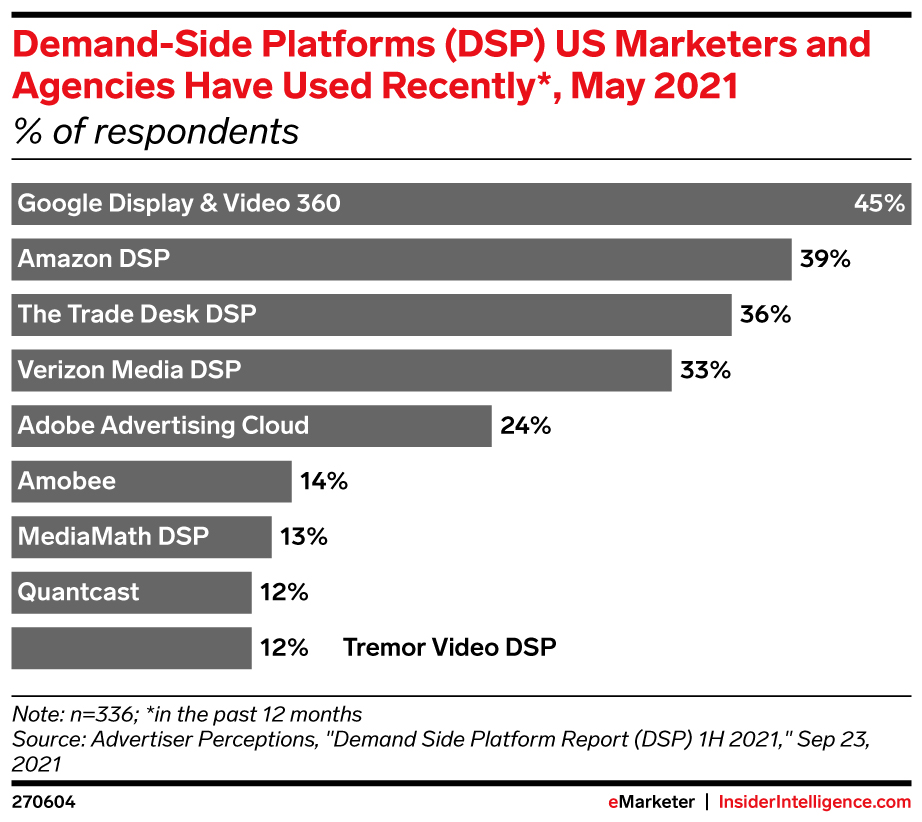
Joshua Dreller
Sr. Director, Content Marketing @ Skai

Joshua Dreller
Sr. Director, Content Marketing @ Skai

Whenever there is a new marketing channel, you can expect there to be blurred lines as to what function within an organization should lead the charge. If we look back at the early 2000s when social media was on the rise and brands began exploring strategy, some delegated ownership to their Comms team or PR firms. Eventually, social media became its own function that would continue to build expertise for this newer and unique channel.
Or when online video began taking off, the question was whether management should
And today, even though Amazon DSP is the youngest demand-side platform, it’s already become the second most popular DSP for US marketers. In this edition of Skai’s Retail Media Roundtable, we ask our expert panel which team they think should manage it.
Do you have any burning questions you’d like to ask our expert panel? Would you like to contribute to this series? If so, please reach out to our content director, Josh Dreller, at joshua.dreller@skai.io.
– Ana Alicia Santaella (Product Marketing Director, Commerce @ Skai)

When Google Shopping first emerged, a similar debate surfaced—should the search team run the ads, or would the eCommerce team be better equipped to run with them? The answer and solution then were neither and both, and instead, a hybrid team emerged for eCommerce advertising that encompassed both traditional search expertise and marketplace product listing know-how.
Similarly, by combining Amazon advertiser expertise and programmatic display knowledge, brands and advertisers can use the Amazon Marketing Cloud (AMC) as a solution. This allows advertisers who are running both Amazon Sponsored Ads and DSP to track attribution across both Amazon platforms in a more powerful and holistic way. Advertisers can now gather full-funnel and cross-channel insights on their customer’s journey to run both programs even more successfully.
In my opinion, the programmatic team should run Amazon DSP. There are several reasons for this, the obvious of which being that Amazon DSP offers media that is bought programmatically, so it should be managed by the team that manages this media
As someone who has cut his teeth in both all-things Amazon and many-things programmatic, I can attest that buying media through Amazon DSP is in a completely different wok than buying sponsored ads. The Amazon Ads team is often too attached to the convenience of 14-day click-attribution, the 0.5% to 3% CTR, and the tangible aspect of knowing exactly where ads will show up to appreciate the nuance of managing and scaling an Amazon DSP program. Contrast that with a programmatic team who has a broader and more holistic vantage, a better grasp of the audience and the customer buying journey, and more patience for the optimization cycles required for programmatic and you’re going to get a very different type of impact on the business from the investment in programmatic media.
Ultimately each advertiser will have to find their own way so there’s no one size fits all. I should caveat that a lot of brands (and agencies) don’t have a programmatic team— including those who do the majority of their sales through retailers as well as others who are digitally native and like the DR-focused nature of sponsored ads. For these advertisers, the best option is to have the team responsible for Amazon-sponsored ads run their Amazon DSP ads.
The Amazon Demand Side Platform (Amazon DSP) is an exceptionally powerful programmatic advertising tool for retail media buyers, but because of its complexity, it demands sophisticated users who can harness its full potential.
Oftentimes, Amazon DSP ads are perceived as display banners only. However, there are other forms of ads accessible using the Amazon DSP console, including audio, out-stream video, in-stream video (also known as Streaming TV or Twitch Video), and many more. These are all available to brands selling on and off Amazon marketplaces and can be run through Amazon Managed Service or Amazon Ads Partner Self-Service Agencies.
With its functions and diversity of ads, it takes a high level of strategic insight and technical know-how to run one or a combination of these ads efficiently and effectively.
As one of the earliest agencies to adopt Amazon DSP self-service and among the few to receive the Amazon Ads Advanced Partner status, we recognize that it is essential to have skilled and knowledgeable subject matter experts—people who are dedicated to understanding the Amazon DSP offerings and buying media programmatically in order to maximize platform performance. We cultivate Amazon DSP power users with extensive practical knowledge who also benefit from access to training on product releases, key retail events, and account management thanks to our partnership status. This approach has delivered both strong engagement with our campaigns and business growth for our advertising clients.

The team or individuals who run DSP should be demand-side platform specialists who actively work within the platform daily. This criterion is essential for maintaining a deep understanding of DSP audience targeting, creative, and placement options, many of which are unique to Amazon DSP. These options are constantly evolving, so consistent hands-on experience is essential to keep up to speed and craft a successful Amazon DSP strategy.
Additionally, navigating the UI is challenging for users who are not actively working in the platform on a regular basis. Projects such as launching campaigns, and optimizing and reporting, may take a DSP specialist hours to complete, while it could take the inexperienced user days to manage the same task.
If not directly part of the Amazon Ads team, the DSP manager should work closely with that team given that DSP investment will have a direct impact on Sponsored Ads performance and Amazon topline performance. Amazon Sponsored Ads and Amazon DSP should be thought of as two pieces of the overall Amazon strategy.
At Gorilla Group, we have a team dedicated to eRetail. Part of this team is a group of ecommerce media experts. We pair individuals that know both retail and media (search and display) together to create a holistic approach to their media goals. We ensure that our media team is 100% accredited on Amazon, not just programmatic experts.
By having individuals experienced in the nuances of Amazon DSP, we can differentiate our clients from their competitors. We use Amazon’s proprietary rich audience segments paired with customized audiences to drive efficiencies and create white space. Our media planners are trained to understand all the available offerings from OTT, mobile apps, desktop off and on-site, and beyond.
This enables them to build scalable full-funnel marketing strategies, as they can influence and optimize all stages of the funnel, and take full advantage of programmatic, search, and other media audience overlap.
As part of Skai’s intelligent marketing platform, our Retail Media solution empowers brands to plan, execute, and measure digital campaigns that meet consumers when and where they shop. Built with best-in-class automation and optimization capabilities, our unified platform allows you to manage campaigns on 30+ retailers including Amazon, Walmart, Target, and Instacart all in one place.
Client results include:
You are currently viewing a placeholder content from Instagram. To access the actual content, click the button below. Please note that doing so will share data with third-party providers.
More InformationYou are currently viewing a placeholder content from Wistia. To access the actual content, click the button below. Please note that doing so will share data with third-party providers.
More InformationYou are currently viewing a placeholder content from X. To access the actual content, click the button below. Please note that doing so will share data with third-party providers.
More Information